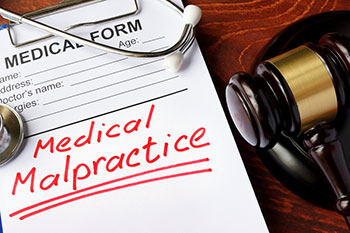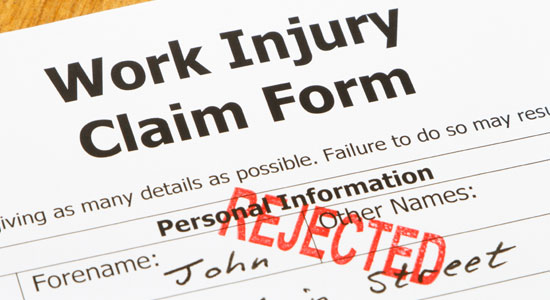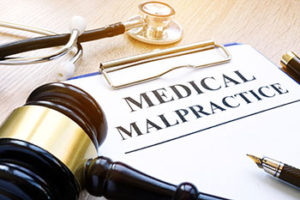 Whether signing up for new auto insurance, adding a new vehicle to your policy, or renewing an existing policy of auto insurance, consider two coverage options that can help you if you are in a car accident: Uninsured and Underinsured Motorist Coverage and Adequate Medical Payments Auto Insurance Coverage.
Whether signing up for new auto insurance, adding a new vehicle to your policy, or renewing an existing policy of auto insurance, consider two coverage options that can help you if you are in a car accident: Uninsured and Underinsured Motorist Coverage and Adequate Medical Payments Auto Insurance Coverage.
These policies can add extra protection for you from uninsured drivers, and can help you if you do not have health insurance or have high deductibles for their health insurance.
Let’s look at these individually, starting with what’s required in Illinois.
Minimum Liability Insurance Requirements in Illinois
Illinois law provides that no auto policy arising out of the ownership, maintenance or use of a motor vehicle that is either registered in Illinois or principally garaged in Illinois vehicle can be renewed, delivered or issued unless uninsured and underinsured motorist coverage is included in an amount equal to the insured’s liability limits, unless specifically rejected by the insured, 215 ILCS 5/143a-2 (2018 State Bar Edition).
 Despite the high cost of medical care and vehicle replacement or repairs, the minimum liability insurance requirements in Illinois are only $25,000 as a result of injury or death to one person, $50,000 as a result of injury or death to two or more persons, and $20,000 as a result of damage or destruction of property in any one motor vehicle crash, 625 ILCS 5/7-203 (2018 State Bar Edition). Obviously, these minimum insurance requirements can be woefully inadequate even for moderate collisions. Uninsured and underinsured motorist coverage is usually not all that expensive to add to your policy and is worth the peace of mind it brings.
Despite the high cost of medical care and vehicle replacement or repairs, the minimum liability insurance requirements in Illinois are only $25,000 as a result of injury or death to one person, $50,000 as a result of injury or death to two or more persons, and $20,000 as a result of damage or destruction of property in any one motor vehicle crash, 625 ILCS 5/7-203 (2018 State Bar Edition). Obviously, these minimum insurance requirements can be woefully inadequate even for moderate collisions. Uninsured and underinsured motorist coverage is usually not all that expensive to add to your policy and is worth the peace of mind it brings.
One of the most important things you can do for you and your family is to purchase adequate uninsured and underinsured motorist coverage.
The Cost of Car Accidents
Experience has shown that medical care required as a result of a motor vehicle crash can result in medical bills between $20,000 and $50,000 or even more per person for just one day in a hospital.
In addition to medical care, property damage can be very significant in a motor vehicle crash. Motor vehicles having a value between $50,000 to $80,000, and even more, are now common on our highways.
Why You Need Uninsured Motorist Coverage
When purchasing auto insurance, you may just be looking to comply with minimum insurance requirements and protect you and your family from financial harm that could result if you are the at-fault driver in a motor vehicle crash. But that may not be enough.
Unfortunately, we often see this scenario: the at-fault driver is either uninsured or underinsured. The not-at-fault victim of the crash doesn’t have additional uninsured and underinsured motorist coverage on their own policy. He or she sustained an injury, expense, and/or property damage in a crash.
It is always disheartening to see this, because the typical uninsured or underinsured driver often does not possess sufficient assets to pay a substantial claim even if a judgment is obtained against them.
Doctors and hospitals do not render care or base their billing statements on who is at fault in an auto crash. They will demand, and are entitled to, reasonable compensation for their services if they treat you, regardless of who may ultimately be determined to be at-fault for the crash.
How To Protect Yourself From Uninsured Drivers
One way you can protect yourself and your family from financial hardship caused by an uninsured or underinsured driver is to insure yourself and your family to the same extent and with the same coverage limits for uninsured motorist and underinsured motorist coverage as you insure against liability to other persons who you may injure or cause property damage as a result of your driving errors.
Ask your insurance agent about adding this to your policy if your existing insurance policy includes uninsured or underinsured coverage in an amount equal to your liability coverage (you have to specifically request such coverage).
One of the most important things you can do for you and your family is to make sure your auto insurance covers uninsured and underinsured motorists.
 What is Medical Payments Coverage?
What is Medical Payments Coverage?
Another coverage that can be very important, especially for those without health insurance or those with high deductible health insurance plans is “Medical Payments” coverage.
This is somewhat unusual coverage. Unlike “liability” coverage or “uninsured motorist” coverage or “underinsured motorist” coverage, medical payments coverage pays for the reasonable medical expenses for those in your vehicle who are injured in a crash, up to the limit of coverage you have purchased, regardless of who was at fault.
Medical payments coverage pays for the reasonable medical expenses for those in your vehicle who are injured in a crash up to the limit of coverage you have purchased regardless of who was at fault.
Why You May Need Medical Payments Coverage
Often, liability for a crash can be disputed even in rather obvious rear-end or intoxicated driver type collisions.
Since the insurance company for the driver who appears to be at-fault has no obligation to pay anything unless and until there is either an agreed settlement or a final judgment, it can be many months or perhaps even years before payment is made on a liability or an uninsured or underinsured motorist policy.
This is where the “pay regardless of fault” aspect of “Medical Payments” coverage can keep your credit rating intact and the debt collectors at bay should liability of the crash event be disputed or contested.
Talk to Your Insurance Agent
In order to determine the appropriate amount of liability, uninsured, underinsured and medical pay coverage for you and your family, our personal injury attorneys at Wolter, Beeman, Lynch, & Londrigan suggest that you discuss the benefits and costs with a trusted insurance agent. Contact us for more information or a free case consultation.

 Claims of
Claims of  Section 2-622(a)(1) is designed to screen and deter frivolous or non-meritorious medical malpractice claims. This Certificate of Merit must recite that the reviewing expert has reviewed the medical records of the Plaintiff as treated by the hospital or physician of concern, and has determined that the hospital’s or physician’s care of that patient deviated from the standard of care applicable to that community. Therefore, when first investigating the potential existence of a medical malpractice claim, the Plaintiff and his attorneys must first obtain all the medical records relevant to the procedure or issue of concern. Thereafter, an appropriate medical expert must be retained to review these records and issue an opinion as to whether a deviation from the standard of care exists. These experts commonly expend many hours reviewing the medical records and writing up the reports necessary to substantiate a claim against the hospital or physician. These experts commonly charge hundreds of dollars per hour for their services, and the initial Certificate of Merit alone can cost several thousands of dollars to obtain. There is also no guarantee that after spending the money necessary for a review of the medical records, that the expert will agree an error has been made. Medical issues are often complex and it is difficult to determine whether an error in treatment has caused an injury serious enough to give rise to a cause of action. Accordingly, attorneys are not generally in a position to determine the merits of a medical negligence claim until the medical records have been reviewed by an independent medical expert and a Certificate of Merit has been obtained. As a result, the potential Plaintiff is commonly asked to advance those sums necessary to secure the Certificate of Merit and confirm that a valid cause of action exists.
Section 2-622(a)(1) is designed to screen and deter frivolous or non-meritorious medical malpractice claims. This Certificate of Merit must recite that the reviewing expert has reviewed the medical records of the Plaintiff as treated by the hospital or physician of concern, and has determined that the hospital’s or physician’s care of that patient deviated from the standard of care applicable to that community. Therefore, when first investigating the potential existence of a medical malpractice claim, the Plaintiff and his attorneys must first obtain all the medical records relevant to the procedure or issue of concern. Thereafter, an appropriate medical expert must be retained to review these records and issue an opinion as to whether a deviation from the standard of care exists. These experts commonly expend many hours reviewing the medical records and writing up the reports necessary to substantiate a claim against the hospital or physician. These experts commonly charge hundreds of dollars per hour for their services, and the initial Certificate of Merit alone can cost several thousands of dollars to obtain. There is also no guarantee that after spending the money necessary for a review of the medical records, that the expert will agree an error has been made. Medical issues are often complex and it is difficult to determine whether an error in treatment has caused an injury serious enough to give rise to a cause of action. Accordingly, attorneys are not generally in a position to determine the merits of a medical negligence claim until the medical records have been reviewed by an independent medical expert and a Certificate of Merit has been obtained. As a result, the potential Plaintiff is commonly asked to advance those sums necessary to secure the Certificate of Merit and confirm that a valid cause of action exists. The costs associated with a medical negligence claim do not end at the creation of the Certificate of Merit. Rather, all of the physicians who rendered care to the Plaintiff must have their records subpoenaed and their testimony provided by deposition. Furthermore, medical experts are commonly retained to further testify in order to establish a deviation in the standard of care. Most of these physicians will charge in the range of many hundreds of dollars per hour resulting in costs associated with claims of this nature commonly in excess of $50,000.00. However, once a Certificate of Merit has been obtained and the attorney agrees to represent the potential plaintiff, these costs of suit are commonly advanced by the attorney. As a result, the attorney must be very confident that he will be able to establish the existence of medical malpractice, and that the injuries suffered by the Plaintiff because of this medical error justify a jury award large enough to offset the costs and risks inherent in this type of litigation.
The costs associated with a medical negligence claim do not end at the creation of the Certificate of Merit. Rather, all of the physicians who rendered care to the Plaintiff must have their records subpoenaed and their testimony provided by deposition. Furthermore, medical experts are commonly retained to further testify in order to establish a deviation in the standard of care. Most of these physicians will charge in the range of many hundreds of dollars per hour resulting in costs associated with claims of this nature commonly in excess of $50,000.00. However, once a Certificate of Merit has been obtained and the attorney agrees to represent the potential plaintiff, these costs of suit are commonly advanced by the attorney. As a result, the attorney must be very confident that he will be able to establish the existence of medical malpractice, and that the injuries suffered by the Plaintiff because of this medical error justify a jury award large enough to offset the costs and risks inherent in this type of litigation. If you’ve suffered a work injury, you may be eligible for three benefits available under the
If you’ve suffered a work injury, you may be eligible for three benefits available under the  (a) A physician licensed to practice medicine in all of its branches preparing a permanent partial disability impairment report shall report the level of impairment in writing. The report shall include an evaluation of medically defined and professionally appropriate measurements of impairment that include, but are not limited to: loss of range of motion; loss of strength; measured atrophy of tissue mass consistent with the injury; and any other measurements that establish the nature and extent of the impairment. The most current edition of the American Medical Association’s “Guides to the Evaluation of Permanent Impairment” shall be used by the physician in determining the level of impairment.
(a) A physician licensed to practice medicine in all of its branches preparing a permanent partial disability impairment report shall report the level of impairment in writing. The report shall include an evaluation of medically defined and professionally appropriate measurements of impairment that include, but are not limited to: loss of range of motion; loss of strength; measured atrophy of tissue mass consistent with the injury; and any other measurements that establish the nature and extent of the impairment. The most current edition of the American Medical Association’s “Guides to the Evaluation of Permanent Impairment” shall be used by the physician in determining the level of impairment. PPD awards are based on losses of specific body parts. (
PPD awards are based on losses of specific body parts. (




 If you are injured at work, you have the right to compensation for lost income, medical bills and permanent injury. To get the compensation you need to move forward with your life, you need to hire experienced workers’ compensation attorneys who can get results, such as the team at Wolter, Beeman, Lynch & Londrigan, LLP.
If you are injured at work, you have the right to compensation for lost income, medical bills and permanent injury. To get the compensation you need to move forward with your life, you need to hire experienced workers’ compensation attorneys who can get results, such as the team at Wolter, Beeman, Lynch & Londrigan, LLP. Are you thinking of suing for medical malpractice? Wolter, Beeman, Lynch, and Londrigan lawyers are here to help. In this post, we will help you understand the basics. Think about whether you situation applies.
Are you thinking of suing for medical malpractice? Wolter, Beeman, Lynch, and Londrigan lawyers are here to help. In this post, we will help you understand the basics. Think about whether you situation applies. You would think that the second hurdle might be redundant as every error would result in a new medical problem. However, that is not the case.
You would think that the second hurdle might be redundant as every error would result in a new medical problem. However, that is not the case. You often hear about the need for medical malpractice reform. Physicians groups, politicians, and the U.S. Chamber of Commerce say that lawyers filing “frivolous” lawsuits increase the cost of medical malpractice insurance.
You often hear about the need for medical malpractice reform. Physicians groups, politicians, and the U.S. Chamber of Commerce say that lawyers filing “frivolous” lawsuits increase the cost of medical malpractice insurance. It’s difficult to determine whether or not you have a valid medical malpractice claim. With
It’s difficult to determine whether or not you have a valid medical malpractice claim. With